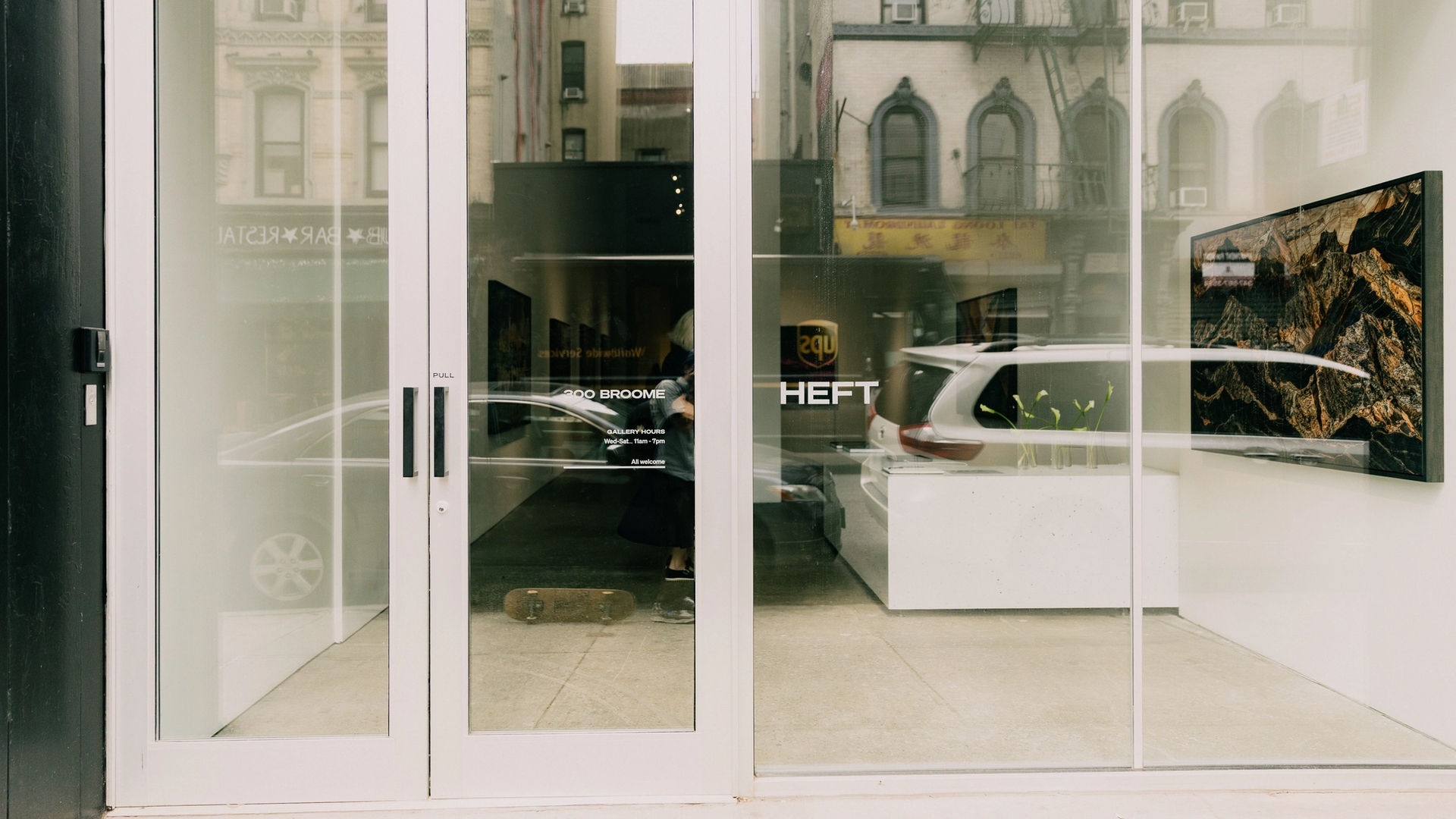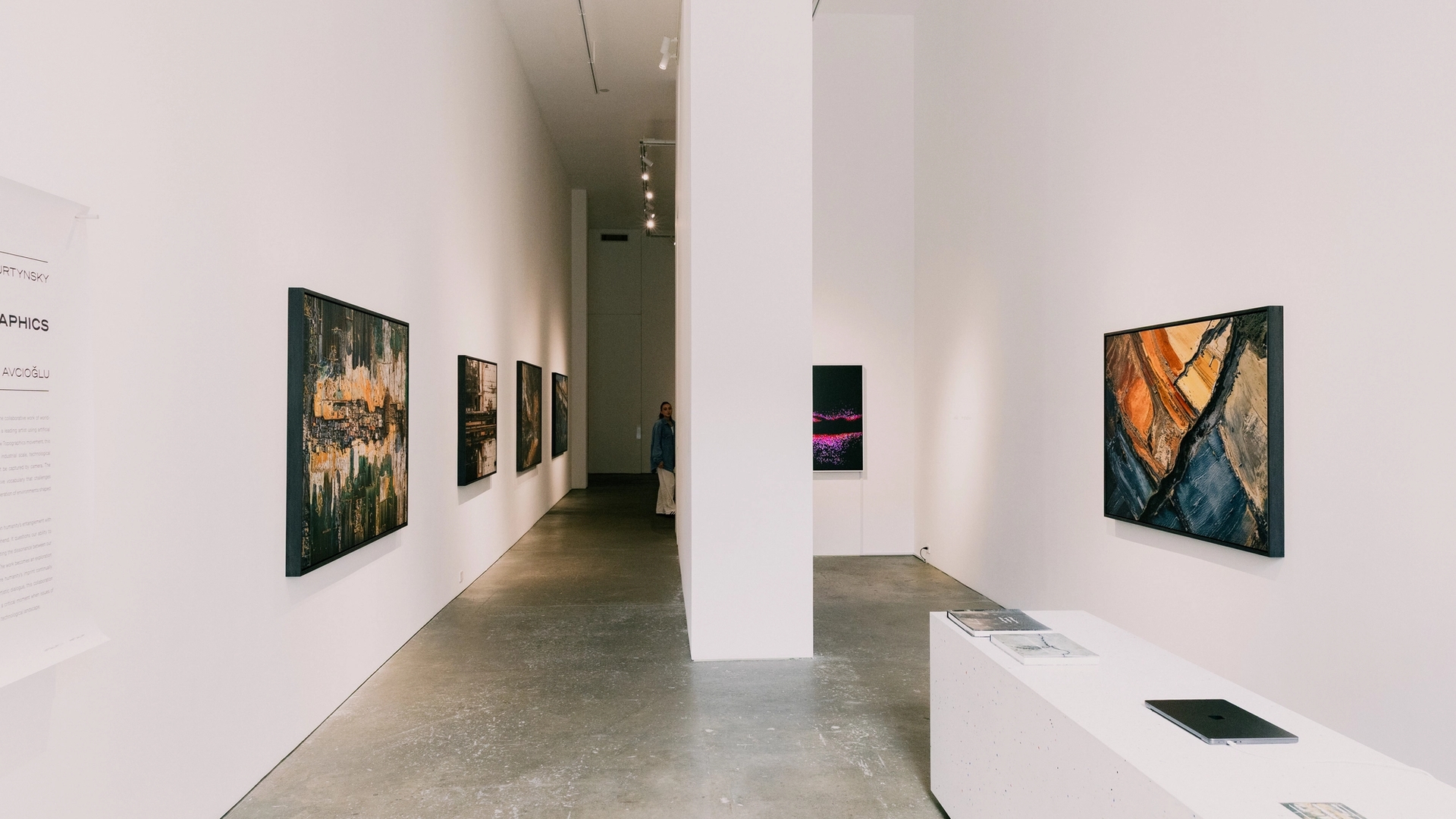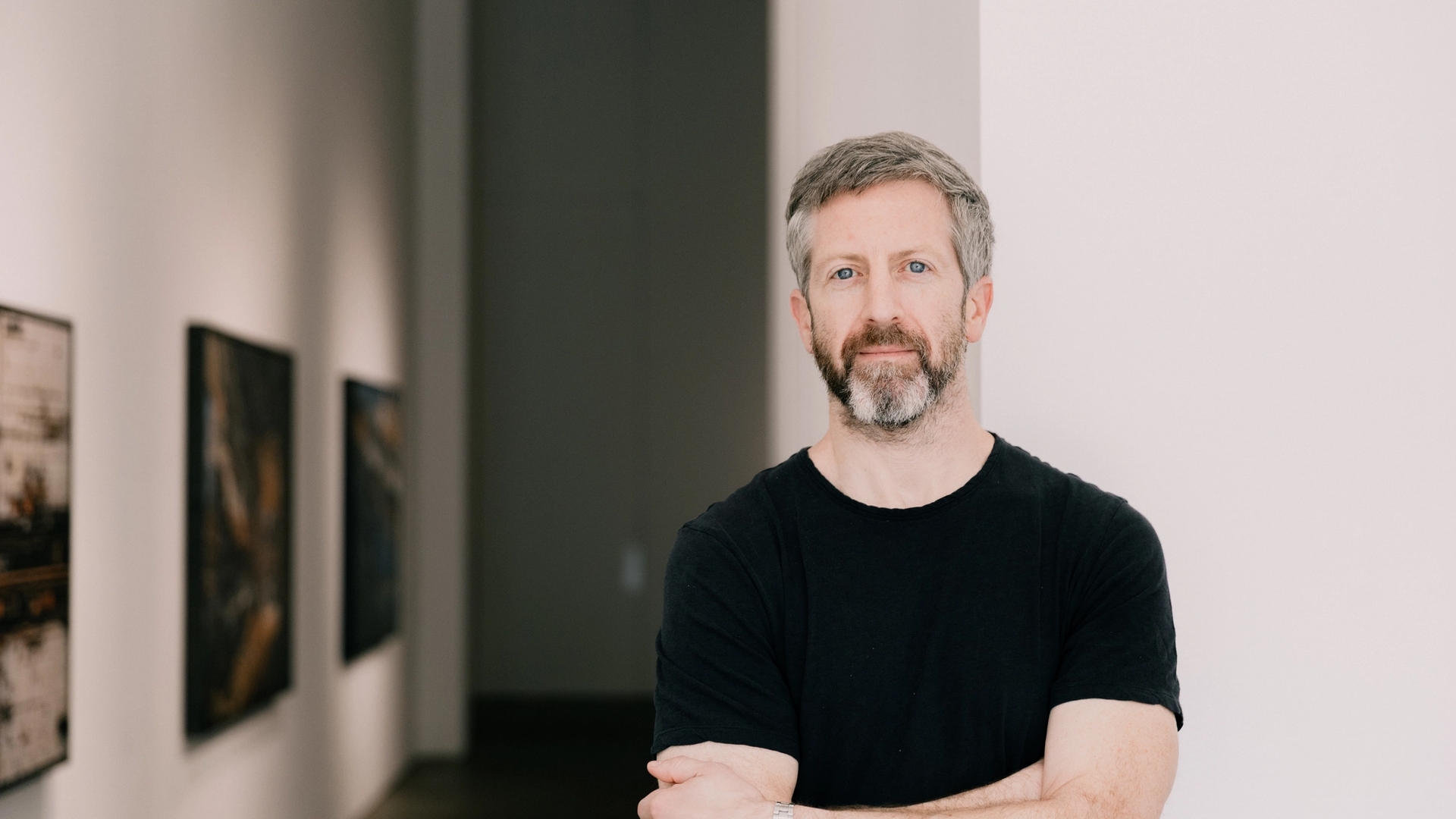GalleryLower East Side
Heft
Where human curiosity meets generative codes and artists test the frontier between human imagination and artificial intelligence.



Why we Love It
The idea of art made with generative AI, or any other machine-led process, can feel strange. Scary, even. How do we befriend artwork that, though guided by humans, seems to have no clear origin? Heft is here to show us.
Step inside, and expectations of technological frostiness dissolve. You’re greeted at the door by an analog (read: human) gallery attendant, ready to show you around.
Up front, a project space hosts weekly drops of digitally-made art. In the main rooms, artists use code, not as a tool, but as a collaborator.
Heft’s exhibitions feel like beta tests where artists can test, refine, and evolve ideas. You’ll see pieces that blur and glitch, unsettle and shine by artists who push the limits of what systems know, teaching the machine to learn what it cannot imagine.
Like the technologies the artists explore, Heft is young and experimental. No one knows where this kind of art will lead, but its story is unfolding here, and that feels like a beginning.
About the Gallery
Part studio, part lab, part community, Heft reimagines the gallery as a space for making, testing, and discovery. Before opening Heft in 2025, creative technologist Adam “Heft” Berninger helped brands and start-ups shape their products and stories. He’s bringing that same agile, collaborative approach to support artists with systems-based, tech-driven practices. Each exhibition unfolds as a shared experiment where audiences and artists shape the future together.



